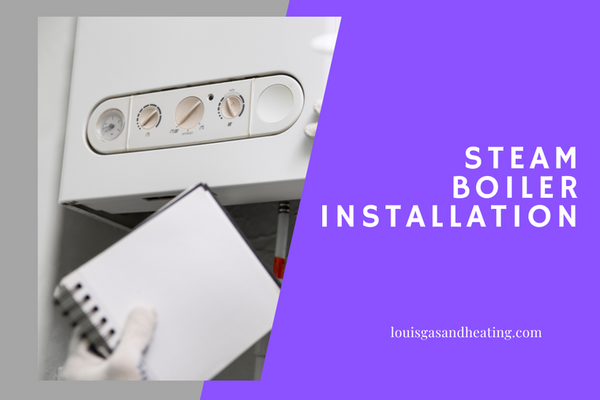- 1-905-452-8193
- Contact Us
- Member Login
- Get Listed Today
- 220,911 members

Regarding efficient heating solutions, steam boilers have proven to be a popular choice for many homeowners and businesses alike. Proper steam boiler installation ensures the system functions optimally and safely. In this article, we will delve into the intricacies of steam boiler installation, covering everything from selecting the right boiler to the final steps of the installation process.
A steam boiler is a specialized vessel designed to generate steam for heating purposes. It operates through the combustion of fuels, which heats water and produces smoke. The steam is then distributed throughout the building via pipes to provide heat.
Steam boilers heat the water using different heating mechanisms, such as gas, oil, or electricity. The generated steam rises to the top and is collected in the steam drum. From there, it travels through the steam pipes, delivering warmth to radiators or other heat exchange devices.
Fire-tube boilers have a simple design with hot gases passing through tubes submerged in water. They are compact, easy to install, and suitable for small to medium heating requirements.
Water-tube boilers feature tubes filled with water and heated externally by hot gases. They are ideal for high-pressure applications and can handle large heating loads.
Electric boilers are highly efficient and eco-friendly, using electricity as their power source. They are easy to install and maintain, making them an excellent choice for smaller spaces.
Gas-fired boilers are popular due to their clean-burning nature and cost-effectiveness. They require a gas supply and are available in various sizes to suit different heating needs.
Oil-fired boilers utilize heating oil to generate steam. They are suitable for areas where the natural gas supply is limited.Factors to Consider Before Installation
Before selecting a steam boiler, assess the heating requirements of your property. Determine the square footage and the number of rooms that need heating to choose the appropriate boiler capacity.
The boiler's capacity should align with your heating needs. An undersized boiler may need help to meet demand, while an oversized one could lead to energy waste.
Consider the availability and cost of different fuel sources. Choose a fuel type that is readily available and fits your budget.
Evaluate the available space for installation and select a suitable location that complies with safety regulations and provides easy access for maintenance.
Check local regulations and obtain the necessary permits before installing to ensure safety and environmental standards compliance.
Inspect the installation site to identify any potential obstacles or safety hazards.
Choose a boiler size based on the heating requirements of the property and the available space.
Clear and modify the installation area to accommodate the boiler and associated components.
Ensure you have all the required tools and equipment for a smooth installation process.
Properly mount the boiler on a sturdy foundation, ensuring stability and safety.
Install the necessary piping system to move steam from the boiler to the heating devices.
Ensure all electrical connections are made securely and in compliance with safety standards.
Set up proper ventilation to dissipate fumes or exhaust gases generated during combustion.
Connect the boiler to the water supply and fuel source, ensuring no leaks or potential hazards.
Thoroughly test the boiler and its components to ensure they function correctly before commissioning the system.
Perform pressure and leak tests to verify the system's integrity and prevent potential accidents.
Adhere to safety protocols and guidelines for the boiler room to prevent accidents and ensure the well-being of occupants.
Conduct compliance checks to ensure the installation meets all necessary safety and environmental regulations.
Schedule regular inspections and maintenance to identify and address any issues promptly.
Clean the boiler and its components regularly to maintain efficiency and prevent corrosion.
Be aware of common boiler issues and learn how to troubleshoot and resolve them.
Hiring a professional for steam boiler installation offers numerous benefits, including expert knowledge, adherence to regulations, and reliable service.
Avoid common DIY installation mistakes such as incorrect sizing, improper piping, and inadequate ventilation to ensure a safe and efficient installation.
While it is possible to install a steam boiler yourself, it is recommended to hire a professional to ensure proper and safe installation.
Regular boiler maintenance should be scheduled at least once a year to ensure optimal performance and identify potential issues early.
The size of the boiler depends on factors such as the property's square footage, insulation, and heating requirements. A professional can help determine the correct size.
Yes, steam boilers are considered energy-efficient, especially compared to older heating systems.
It is possible to switch from an oil-fired boiler to a gas-fired one, but it may require some modifications to the system.
Proper steam boiler installation is crucial for ensuring efficient heating and the safety of the occupants. Following the outlined steps and considering all relevant factors, you can install a steam boiler that effectively meets your heating needs. Remember to prioritize safety and consult a professional if you encounter any challenges during installation.
